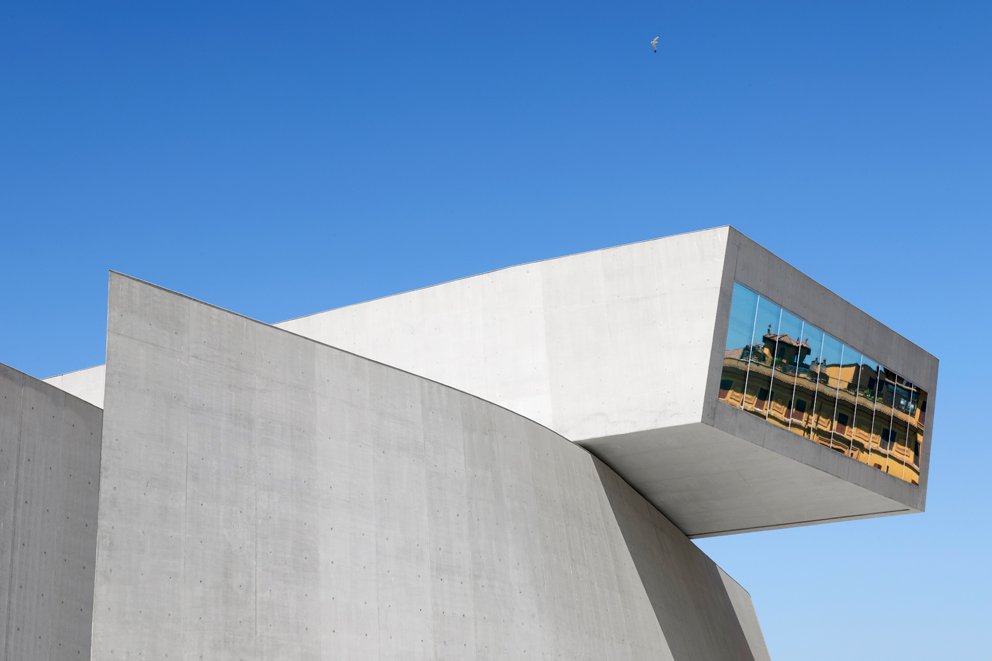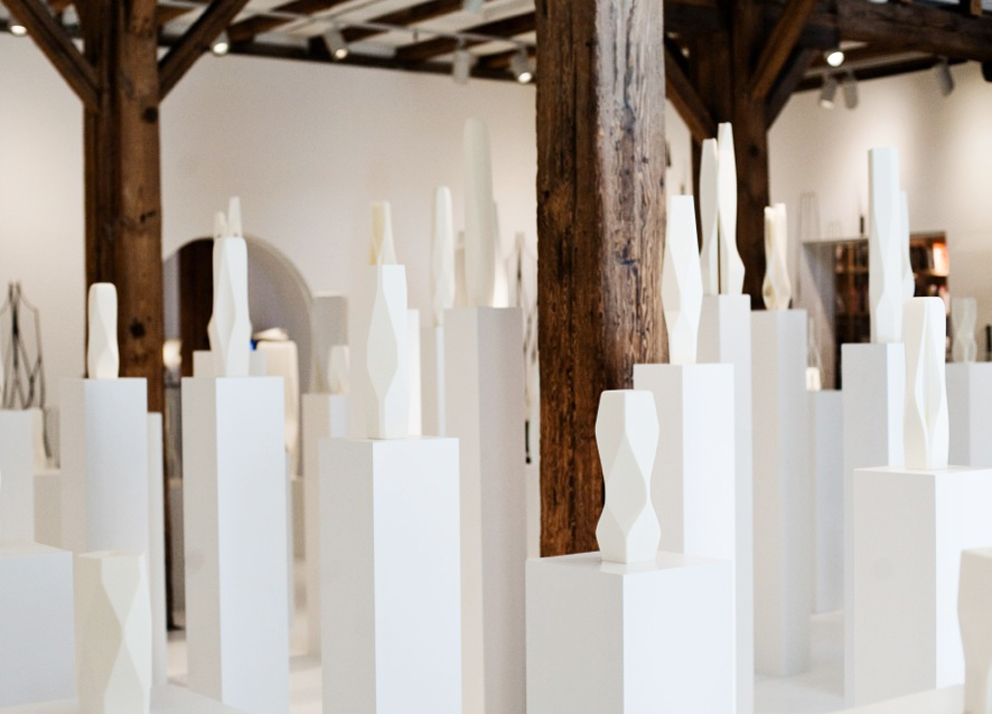
It’s a long time since the Danish Architecture Center has so resembled a museum. The first room in the major Zaha Hadid show is filled with filigree exhibits – strikingly presented on platforms of different heights. They are longitudinal forms that are often rounded. Many of them only differ in terms of the details, almost all are primarily white or cream, and the floor is likewise white – by virtue of this monochrome feel, the ensemble exudes a meditative, almost clinical sense of calm. Nowhere do you spy entrance doors, windows or other signs that these objects are architectural models. Instead, they seem to be highly aesthetic objects whose purpose can simply not be defined.
Small wonder that the one or other of the architects who attended the preview came up with somewhat spiteful comments. To offer two examples: “So they’ve bought themselves a 3D printer for the office and are now toying around with it.” Or “I initially thought they were vases.” Actually, the slender exhibits do indeed slightly resemble vases, not least because they often have an opening at the top. Hadid would presumably not take the comparison as an insult. She no doubt personally approved the fact that in one corner of this room six of the gleaming silver vases have been placed on a plinth – she designed them for Alessi. Stood in a row, the decidedly hard-edged vases somehow bring high-rises to mind, and the idea is quite witty. Whereas in the loggia next door, luminaires designed by Hadid hang from the ceiling in a decidedly mundane manner.
Each object in the first room is assigned a number, a year, and a place. “CBD001 Beijing China 2010” is to be read on the plinth bearing the highest model. However, this data does not tell you much other than the item it presumably a model made three years ago for a building in Beijing. That said, the one or other label is more matter of fact, such as “Central Bank of Iraq”. Countless exhibits bear the same label, albeit with a different number, and visitors can only assume that this must mean they are elaborations of a specific idea or different proposals for one and the same building, such as the Central Bank of Iraq. Viewing the objects is certainly enjoyable but for them to really be instructive we would need to be able to grasp the development process, for example by being told why what changes were made and being shown models from a later design phase, perhaps supplemented by renderings.
That’s precisely what you get on the first floor. There you are first confronted by two sofa designs reminiscent formally of Luigi Colani’s work. They’re followed by a room dedicated to Hadid’s proposal for the “MAXXI” in Rome, the Italian national museum for 21st century art, with a large model of the building on show in the middle of the room. Unlike on the lower floor, the model is of a later phase in the design, and the building’s function is clearly discernible. Gone are the extreme rounded sections, and the outer walls merely feature curves, generating about as much architectural dynamism as a long exposure recording of car headlights traveling along the side of a room. There are renderings on the wall, whereby you’ll need a bit of practice to spot out the differences between model and rendering, as again you’ll hunt for an explanatory text in vain. What does become clear is that the number of curved sections to the building has been reduced and as a result the museum better melds with the urban fabric and seen from above infuses the surroundings with great dynamism.
Zaha Hadid not only designed the MAXXI, but also the new annex to the Ordrupgaard Museum north of Copenhagen. So you can stand amazed at her architecture in reality after exiting the exhibition. “Hadid builds museums for herself, not for art,” is the kind of commentary one not infrequently hears when talking to museum staff and artists. One artist who had a solo show at the Ordrupgaard Museum and whose name we do not wish to reveal complained that there were not enough walls to create space for the pictures, to mention but one example. Be it MAXXI or the Ordrupgaard, it’s no simple matter presenting works of art in buildings Hadid has designed. Indeed, the exhibition eschews any critical appraisal of her work, and the show is thus more an appreciation, and advertising matter. Which is hardly surprising since it was created in collaboration with Hadid’s office.
Moreover, the exhibition only shows a small section of the broad spectrum of work handled by Hadid’s studio, but familiarizes viewers with its efforts. Browsing the show is a real pleasure, but to be instructive and not just an aesthetic experience there would need to have been far more explanation. Long explanatory texts often easily distract from the exhibits, but even short explanations would have helped especially those visitors who are interested in architecture but are not Hadid experts. A little more information would have helped the Danish Architecture Center succeed better in acquainting not just architects with Zaha Hadid’s architecture.
Zaha Hadid – World Architecture
29 June til 29 September 2013
Danish Architecture Center, København, Denmark
















